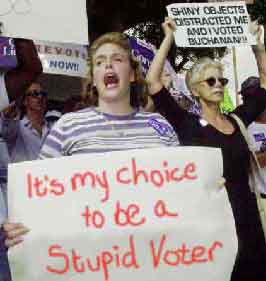

![]() For many workers, the new year initiates a process called open enrollment — when many employees designate a health plan through their employer — that’s as comprehensible as the tax code. During the annual cattle call, employees are pummeled with bureaucratic jargon about co-pays, deductibles, and out-of-pocket maximums.
For many workers, the new year initiates a process called open enrollment — when many employees designate a health plan through their employer — that’s as comprehensible as the tax code. During the annual cattle call, employees are pummeled with bureaucratic jargon about co-pays, deductibles, and out-of-pocket maximums.
![]() Though some employers have discovered a relatively simple alternative that’s far superior, open enrollment in a health plan gets more confusing — and, for everyone, more expensive — each year. Understanding why requires a basic grasp of health policy history.
Though some employers have discovered a relatively simple alternative that’s far superior, open enrollment in a health plan gets more confusing — and, for everyone, more expensive — each year. Understanding why requires a basic grasp of health policy history.
![]() The widespread bureaucratization of medicine was developed during the 20th century, when the government began to intervene in the medical profession with a range of regulations. From changing the tax code to punish individuals buying their own health insurance to socialized medicine for those persons over age 65 and an employer mandate to offer something called an HMO, the concept of force is at the core of today's health financing system.
The widespread bureaucratization of medicine was developed during the 20th century, when the government began to intervene in the medical profession with a range of regulations. From changing the tax code to punish individuals buying their own health insurance to socialized medicine for those persons over age 65 and an employer mandate to offer something called an HMO, the concept of force is at the core of today's health financing system.
![]() The individual was first discouraged from buying insurance in 1942 when employee health premiums were made tax deductible to employers — not to individuals. Congress created Medicare in 1965, making individual insurance for those over 65 obsolete. Subsidized, unrestricted health care for seniors lead to a frenzy of spending by patients and doctors.
The individual was first discouraged from buying insurance in 1942 when employee health premiums were made tax deductible to employers — not to individuals. Congress created Medicare in 1965, making individual insurance for those over 65 obsolete. Subsidized, unrestricted health care for seniors lead to a frenzy of spending by patients and doctors.
![]() Predictably, as costs went up, those on the left, including then freshman Sen. Ted Kennedy, insisted that government pay for everyone’s health care; they promoted the idea of a health maintenance organization, a term coined by a left-wing college professor.
Predictably, as costs went up, those on the left, including then freshman Sen. Ted Kennedy, insisted that government pay for everyone’s health care; they promoted the idea of a health maintenance organization, a term coined by a left-wing college professor.
![]() President Nixon appeased the left and proposed the HMO Act, which Congress passed in 1973. The law created new, supposedly cheaper health coverage with millions of dollars to HMOs, which, until then, constituted a small portion of the market. Combined with Medicare, the HMO Act eventually eliminated affordable individual health insurance.
President Nixon appeased the left and proposed the HMO Act, which Congress passed in 1973. The law created new, supposedly cheaper health coverage with millions of dollars to HMOs, which, until then, constituted a small portion of the market. Combined with Medicare, the HMO Act eventually eliminated affordable individual health insurance.
![]() Employers, forced to offer HMOs, stopped offering a choice of plans, making real insurance more expensive for the individual. The government had instituted HMOs — and their cousin, PPOs, which were also instituted by the state — at the insistence of the left and the capitulation of conservatives.
Employers, forced to offer HMOs, stopped offering a choice of plans, making real insurance more expensive for the individual. The government had instituted HMOs — and their cousin, PPOs, which were also instituted by the state — at the insistence of the left and the capitulation of conservatives.
![]() The result was quasi-socialized medicine and, as with every compromise of capitalism and socialism, capitalism was blamed for the resulting disaster. Advocates of socialism, such as Sen. Kennedy, merely became opponents of the monstrous hybrid they had concocted.
The result was quasi-socialized medicine and, as with every compromise of capitalism and socialism, capitalism was blamed for the resulting disaster. Advocates of socialism, such as Sen. Kennedy, merely became opponents of the monstrous hybrid they had concocted.
![]() Since Nixon’s and Kennedy’s HMO Act was passed, the individual has become a prisoner. Covered by an employer and herded into managed care, the individual is powerless. Under managed care, the patient wanders the maze of managed care, awaiting treatment approval, hoping not to be refused or delayed treatment.
Since Nixon’s and Kennedy’s HMO Act was passed, the individual has become a prisoner. Covered by an employer and herded into managed care, the individual is powerless. Under managed care, the patient wanders the maze of managed care, awaiting treatment approval, hoping not to be refused or delayed treatment.
![]() It’s money for practically nothing. Premiums deducted from a paycheck for a managed care plan do not pay for medical treatment decided essentially between patient and doctor, adjudicated by insurance companies using objective standards; premiums pay for the management of care, i.e., health maintenance, by a third party.
It’s money for practically nothing. Premiums deducted from a paycheck for a managed care plan do not pay for medical treatment decided essentially between patient and doctor, adjudicated by insurance companies using objective standards; premiums pay for the management of care, i.e., health maintenance, by a third party.
![]() Unrestricted free choice in medicine — insurance chosen, provided and paid for by the individual — has practically vanished. But a new concept in paying for medicine, the Health Savings Account (HSA), offers the first real opportunity in generations.
Unrestricted free choice in medicine — insurance chosen, provided and paid for by the individual — has practically vanished. But a new concept in paying for medicine, the Health Savings Account (HSA), offers the first real opportunity in generations.
![]() Combined with catastrophic insurance, the Health Savings Account offers a choice to purchase health care as an individual — neither through an employer nor through government. Using money from the HSA, which, unlike a 401(k), the employee owns, the patient can pay out of pocket for health costs or leave the money alone to earn interest.
Combined with catastrophic insurance, the Health Savings Account offers a choice to purchase health care as an individual — neither through an employer nor through government. Using money from the HSA, which, unlike a 401(k), the employee owns, the patient can pay out of pocket for health costs or leave the money alone to earn interest.
![]() Once the HSA-compatible health plan’s deductible is reached, the insurance policy kicks in, typically with free choice of doctors and hospitals, though HSA plans vary. Imagine medicine without networks, percentages, thresholds, co-pays, generics and pre-authorization from a nurse practitioner at a phone bank in Idaho — that’s the best of the Health Savings Account plans: free choice of treatment, 100 percent of costs above the deductible, real, name-brand drugs and less restrictions on medicine, that plus tax-deductible contributions which earn as much as four percent interest.
Once the HSA-compatible health plan’s deductible is reached, the insurance policy kicks in, typically with free choice of doctors and hospitals, though HSA plans vary. Imagine medicine without networks, percentages, thresholds, co-pays, generics and pre-authorization from a nurse practitioner at a phone bank in Idaho — that’s the best of the Health Savings Account plans: free choice of treatment, 100 percent of costs above the deductible, real, name-brand drugs and less restrictions on medicine, that plus tax-deductible contributions which earn as much as four percent interest.
![]() The notion of a tax-advantaged savings account to which the employer and the employee may contribute is a knockout punch to higher health costs for lower quality care. It beats the bureaucratic open HMO/PPO enrollment in which embattled employers bear the burden of higher premiums while their employees suffer under arbitrary restrictions.
The notion of a tax-advantaged savings account to which the employer and the employee may contribute is a knockout punch to higher health costs for lower quality care. It beats the bureaucratic open HMO/PPO enrollment in which embattled employers bear the burden of higher premiums while their employees suffer under arbitrary restrictions.
![]() The lack of a market in individual health insurance, not a lack of regulations, led to today’s open enrollment mess. A better health plan, such as a Health Savings Account policy, preserves the right to choose — and pay for — one’s own health care. It is becoming an option at last and, for many workers and the businesses that employ them, the faster, the better.
The lack of a market in individual health insurance, not a lack of regulations, led to today’s open enrollment mess. A better health plan, such as a Health Savings Account policy, preserves the right to choose — and pay for — one’s own health care. It is becoming an option at last and, for many workers and the businesses that employ them, the faster, the better.

Design copyright Scars Publications and Design. Copyright of individual pieces remain with the author. All rights reserved. No material may be reprinted without express permission from the author.
Problems with this page? Then deal with it...



